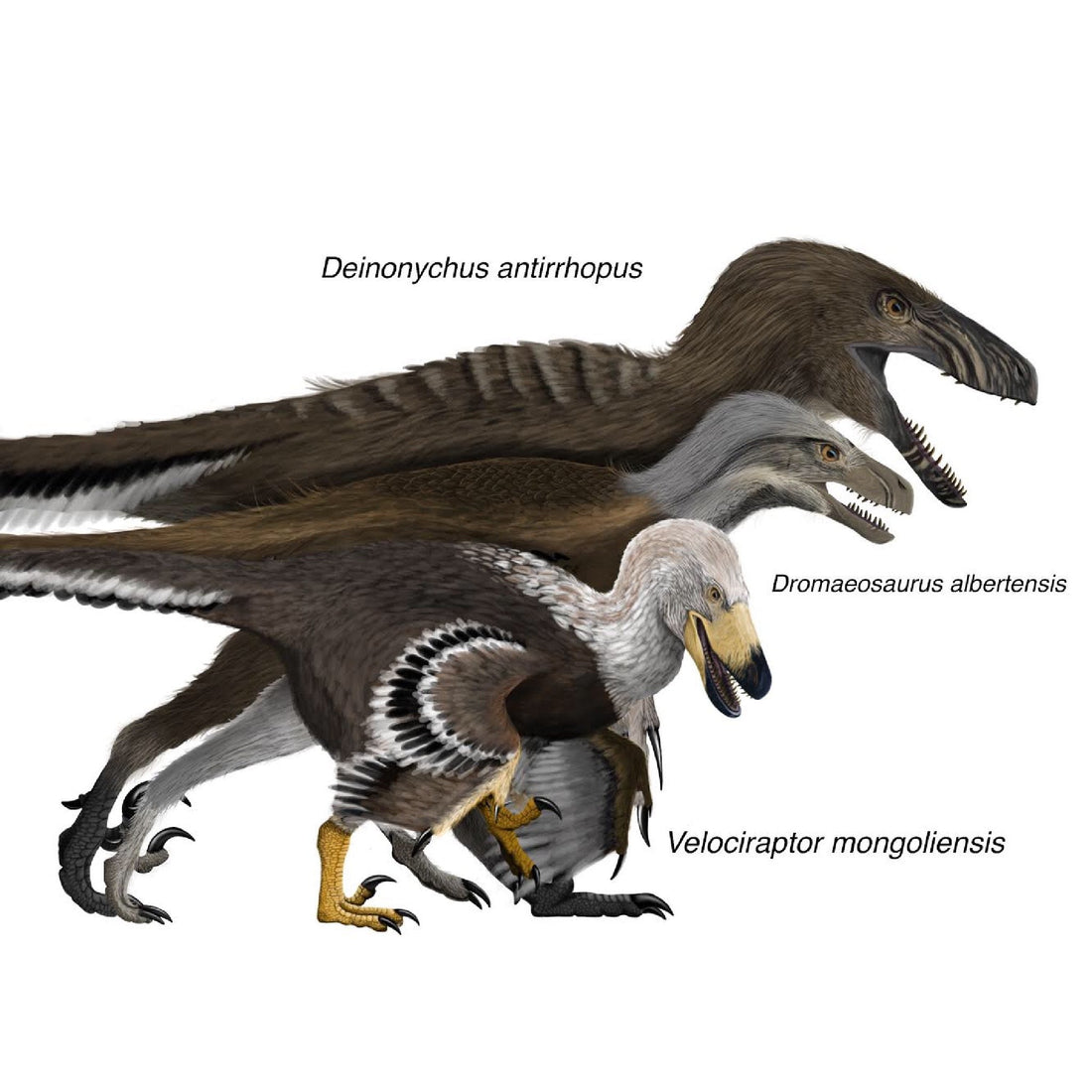
Ah, the turkey, that staple of Thanksgiving fare! Its scientific name is Meleagris gallopavo. The genus means "Guinea fowl," and the species name means "rooster peacock." The origin of the word turkey is so fascinating I had to share a link here.
Let's briefly look at some of the turkey's more illustration first cousins, whose dinner table conversations can turn snarky!

Velociraptor - 75 million years ago, Velociraptor roamed the arid Mongolian terrain, eating Protoceratops and its kin and pretty much whatever was 60 lbs. or less. Speedy, toothy, and armed (legged?) with a nearly 3" killing claw complementing small, sharp hand claws, it packed quite the punch. Velociraptor is one of the few dinosaurs we know had feathers. Though the star of Jurassic Park, it was actually the size of a large turkey (30 lbs.) with a body smaller than a turkey but having an extra-long tail. It receives all the accolades and paychecks despite being the least intimidating of its cousins (next to the turkey, of course).
 Deinonychus - 112 million years ago roaming the western United States, this 12' long, 200 lb. predator started the entire dinosaur renaissance with its publication in 1969. A renaissance we are still enjoying five decades later. With a "killing claw" core of over 3", in life, the claw possibly exceeded 5" in length. It is easy to see why this turkey cousin was the basis for the Velociraptor in Jurassic Park. Yep, Crichton took a Deinonychus body, upscaled it slightly, and then dubbed it Velociraptor. Family get-togethers have been awkward ever since between the two!
Deinonychus - 112 million years ago roaming the western United States, this 12' long, 200 lb. predator started the entire dinosaur renaissance with its publication in 1969. A renaissance we are still enjoying five decades later. With a "killing claw" core of over 3", in life, the claw possibly exceeded 5" in length. It is easy to see why this turkey cousin was the basis for the Velociraptor in Jurassic Park. Yep, Crichton took a Deinonychus body, upscaled it slightly, and then dubbed it Velociraptor. Family get-togethers have been awkward ever since between the two!

Dromaeosaurus - Pound for pound one of the most ferocious of the raptors, this beast had a powerful jaw and strong skull, unlike those of its closest cousins, whose comparably wispy snouts weren't built for chomping power. Dromaeosaurus gives its name to all the raptors as, scientifically speaking, all of its cousins are called the dromaeosaurids. Outside of scientific circles, however, they are known as "raptors" thanks to the stardom of its tiny cousin, Velociraptor. This irks Dromaeosaurus to no end and is the source of more than one family dispute at the table.

Utahraptor - The largest of the "raptors," its "killing claw" may be unmatched in size! It lived 135 million years ago in Utah and was the apex predator of its day. It appeared on the public scene right as the Jurassic Park movie caught fire and actually managed to be larger than the Velociraptor group in the movie. Utahraptor is quick to point this out to its smaller kin. However, despite its size, with a "killing claw" over 7" long, it still hasn't gained the fame of its small cousin Velociraptor. It does take solace in pointing out that, though only named in 1993, it has far more public recognition than its older-named cousins (Deinonychus, 1969; Dromaeosaurus 1922).
The turkey no longer invites its super famous second cousin, Tyrannosaurus rex, to feast after the unfortunate incident of '98...
Happy Thanksgiving!
BC
PS - while researching the turkey, I learned that the "Ben Franklin wanted the turkey as the national bird" story was just that, a story. Turns out his thoughts on the matter were shared privately with his daughter and not aired publicly on the floor of Congress, as I had been told as a wee lad. First the Easter Bunny, then Santa, and now this?

